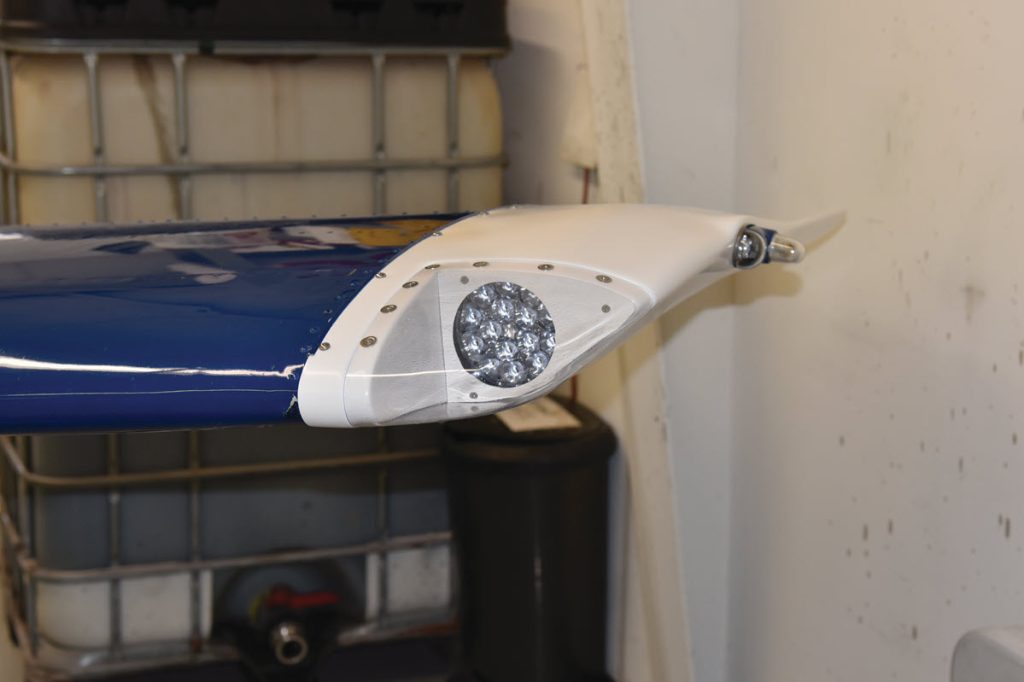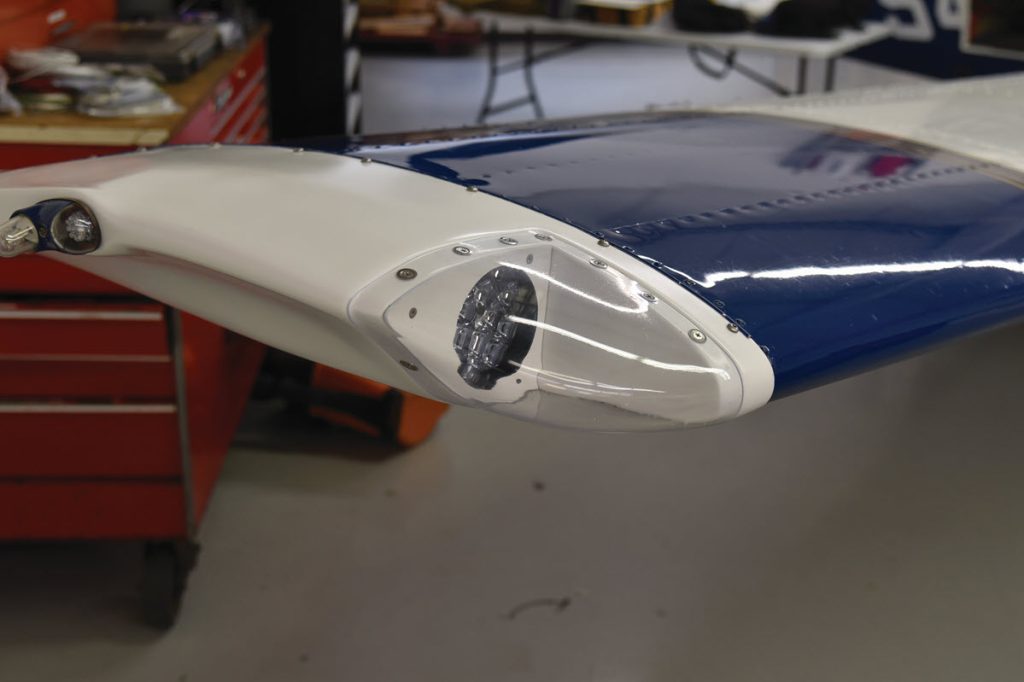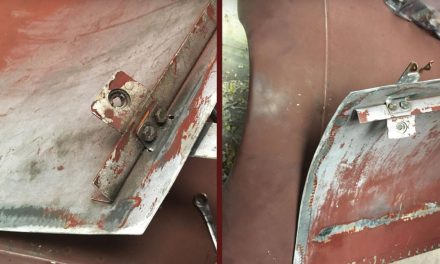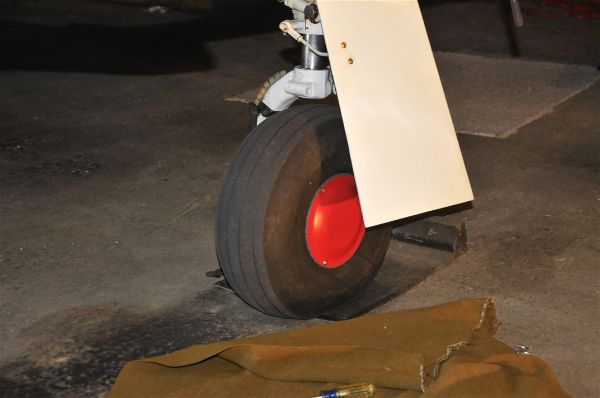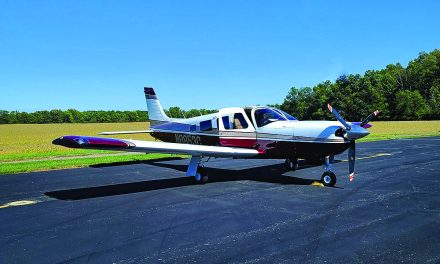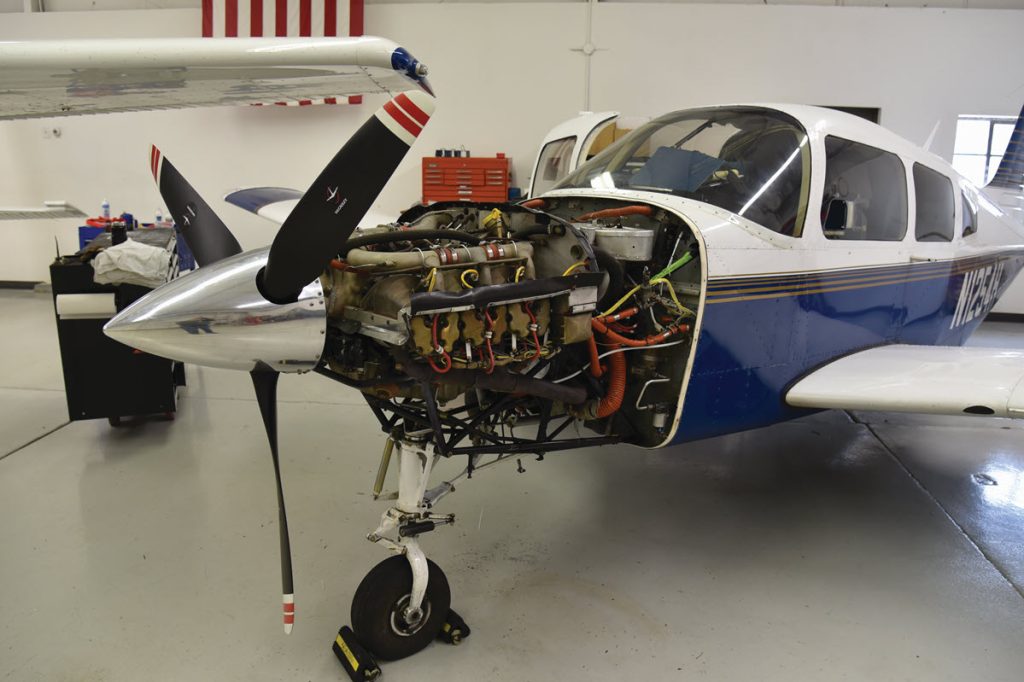
By Scott Sherer
If you’ve been flying for a while, you learned to have certain fears that go along with the flying experience. These are the sub rosa facts of life for pilots. We all have this secret list and we do everything we can to mitigate the risk that goes with the list.
What’s on the sub rosa list, I hear you ask. It starts with engine failure and includes loss of control on takeoff or landing, and forays into weather that is too much for us and our aircraft. It also includes high-speed exchanges of paint with another aircraft in flight.
This last one is highly unlikely, but it does happen. Over the years, most of us have discovered that filing an IFR flight plan or using flight following helps reduce this already infinitely small risk. It’s a very big sky out there and I’ve flown thousands of miles never seeing another aircraft. But they’re there lurking in the clouds or camouflaged by the ground. There may be no inherent risk, but they’re still there. As my grandfather would have said, we’re “fat, dumb, and happy” not knowing what traffic is there.
So where are these planes? Back in our pre-GPS days, they were all on Victor airways. My instructors taught me to never fly at exactly odd-thousands plus 500 or even-thousands plus 500. Be up or down a hundred feet or so. Especially right over the VOR. GPS (and previously LORAN) pretty much eliminated that problem, but within 10 miles of an airport at pattern altitude is very problematic, even today.
Many years ago, we got Traffic Alert Systems (TAS), TCAS (I and II), and those systems still exist and work well. Today, most of us are enjoying using ADS-B/TIS. In my case, I have wondered, as my wife says, “What did we ever do without it”? And she’s right! You get 30 miles out from your destination and zoom in on the display and you can see all the traffic long before you have to deal with it. It’s a huge improvement.
Getting back to the list, there’s another sub rosa item. What’s that? The FAA says ADS-B/TIS is not a reliable source of traffic information and that we’re still supposed to rely on “see and avoid”! Oh, yea, right. How many of us have given up on see and avoid because, well, another sub rosa list item: It doesn’t work very well. If the FAA says that ADS-B/TIS shouldn’t be relied on for traffic avoidance, at least not totally, have they ever gotten into an airplane and tried to see traffic around an airport?
I admit I use ADS-B/TIS so much that I have it on four displays in my Arrow. But I do try very hard to see and avoid, too! And if I’m going more than 50 miles, or so, I almost always use flight following or file an IFR flight plan. Are all of these, together, a perfect solution?
You know the answer is No. However, let’s be realistic. We’re trying to reduce or eliminate the risk of a midair collision from infinitely small to zero. That isn’t easy. But I did reduce the risk yet again, at least a small amount.
So in addition to using ADS-B/TIS, “see and avoid,” and flight following/IFR flight plans, I always have all my lights on, day and night — strobes, wingtips, and tail and landing lights. They’re all LED now, so they don’t stress the electrical system, and they never burn out.
And I just installed new Knots2U wingtips with pulsing landing lights in them. Back in January 2022, I ordered new upswept wing tips with landing lights in them. They cost $1,880 for a pair and include wire, circuit breaker, switch, installation instructions, and STC. Note that these tips will reuse your existing nav or nav/strobe light assembly. (The strobe kit is not included). If you need a new nav or nav/strobe light because yours are 50 years old, you can order that from Knots2U at the same time. They keep them in stock and ready to ship from Whelen.
Also, there are options that need to be selected at purchase time. By default, they include standard incandescent landing lights. These are high current bulbs that don’t have a long life. If you’re going to have your lights on all the time, like I do, these standard lamps aren’t what you want. HID lamps, by far the brightest, raise the cost to $2,880. With Whelen G3 LED bulbs, the cost is $2,458. With AeroLED lights, searing the sky with 11,000 lumens, the cost is $3,130. If you want built-in pulsing of those lamps, the cost is $3,130.
Additionally, you have a choice of three different switches: A standard rocker switch for on-off, a split rocker switch with on-off, and a toggle switch with on-off-on. The unit also has an option for 12/14 or 24/28 volts DC. For less than 10 dollars, you can get a model-specific hardware kit for your plane that includes new stainless steel screws and other parts so you don’t have to reuse any 50-year-old hardware.
So here’s what I installed: I ordered the 12/14-volt version with AeroLED bulbs producing 11,000 lumens with the built-in pulse unit. After I ordered them, I received an email from Knots2U stating that they would be custom-built just for me, and that would take a couple of weeks. Sure enough, in a bit over two weeks, I was able to drive over and pick them up. Of course, if you don’t live near their headquarters in Burlington, Wisconsin, like I do, you can have them shipped.
Five years ago, I put the same set of wingtips on my 1977 Seneca II. At the time, the AeroLED bulbs with built-in pulsing weren’t available. An external unit was needed for pulsing. This external unit is still available from Knots2U, and I like it a bit better than the AeroLED built-in pulsing. However, it’s much easier to wire the AeroLEDs with built-in pulsing than the external unit I did five years ago. And the external unit isn’t worth the extra purchase expense, either.
So what’s different? On the AeroLED, the bulbs blink on and off. Left, then right, and back and forth. With the external pulsing unit, each bulb dims down while the other gets brighter. And vice versa. It’s way cooler, and if a few hundred dollars is of no concern, those are the way to go. But if you want to save a few hundred, skip it and get the built-in pulser.
Also, when I did this for the Seneca, I did the installation, and I wrote two articles on that installation that were published in this magazine and are in the online archives. I did the entire installation myself, except for the circuit breaker, which my shop did. Since my plane was in the shop anyway for annual, I did the installation under the direction of association A&P/IA Erich Rempert. Erich let me do the job, and he signed off on it, as I did it to his professional standards.
This time around, being a little older and distracted by other things in life, I had my shop do it. All I had to do was write the check (ugh) and fly away. That was a novel experience! If you’re familiar with my articles, you know I almost always do the work myself. While that was my intention, it didn’t work out that way, and when my annual inspection came around on the calendar, I just let them do it.
So how does it work? It’s awesome! I had a friend go up in his plane to evaluate it, and he can see me in the middle of the afternoon from five miles away, perhaps even more! So the “see and avoid” mandate works well with these, day or night. I highly recommend them in conjunction with ADS-B/TIS or the TAS/TCAS solutions.
My advice is that this should be at the top of your list of safety projects to be done. And there’s a bonus. I haven’t personally verified this, but the Knots2U website claims a 2 to 3 mph increase in cruise speed over the original rounded wingtips that may already be on your plane. They also claim a small increase in rate of climb and improved stability and reduced takeoff roll.
I have flown with these wingtips on the Arrow three times now, and I have no idea if performance is improved or not. My experience shows that at least my Arrow does everything the same way it did before; it’s just easier to see it. In the case of my Seneca, I flew with them for years, and my friend, John, who purchased the plane from me, is still using them.
My goal was to be much more visible. I have achieved my goal, and I give Knots2U an A+.
RESOURCES
Lighted Wingtips, RD-6000, Knots2u.com
OTHER READING ON LIGHTED WINGTIPS
Read at piperowner.org/archive
A DIY Guide to Installing Lighted Wingtips, by Scott Sherer, July 2016
Installing Lighted Wingtips Part 2 Pulse Electronics Wiring, Scott Sherer, September 2016

